
In recent years, IPMB has spared no effort in recruiting outstanding researchers in the fields of plant biology and microbiology to expand the horizons of knowledge and increase academic influence. Dr. Jian-Geng Chiou is one of the fresh additions to the institute, bringing with him a wealth of expertise in developmental biology, cell biology, and microbiology. He is committed to continuing his research in microbial developmental mechanisms. Let’s delve into his story!
Education and Work Experiences:
🔹2007 – 2011….B.S. Life Science, National Taiwan University, Taiwan
🔹2012 – 2013….Research Assistant, Agricultural and Biotechnological Research Center, Academia Sinica, Taiwan
🔹2013 – 2019….Ph.D. Genetics and Genomics, Duke University, USA
🔹2019 – 2023….Postdoctoral Research Fellow, Department of Molecular Biology, UCSD
🔹2023~ …..Assistant Research Fellow, Institute of Plant and Microbial Biology, Academia Sinica, Taiwan
How did your interest in plant science develop initially?
During my undergraduate years, I majored in life science, a department that encompassed both animal and plant studies. However, those who chose to study plants were in the minority. Personally, I was not inclined to conduct experiments involving larger animals such as mice. So, at that time, I faced a decision: either opt for research using organisms like fruit flies, nematodes, or bacteria, which I didn’t have a strong attachment to, or specialize in the field of plant science. It wasn’t until my junior year that I gradually solidified my profound interest in botany and made a determined commitment to pursue further knowledge in this area.
What inspired you during your university years and your time as a research assistant?
Looking back on my university days, I had the opportunity to delve into the study of floral symmetry in the flowers of Sinningia speciosa in Dr. Chun-Neng Wang’s laboratory within the Department of Life Science at National Taiwan University. This experience ignited my interest in the evolutionary development of plants. Additionally, I participated in an interdisciplinary project at that time, which exposed me to the application of mathematics in biological research. After graduating, I joined the research team of Dr. Yee-Yung Charng at the Agricultural Biotechnology Research Center (ABRC) of Academia Sinica. His research focused on the response of Arabidopsis to heat stress, while my specific focus was on the molecular evolution of genes related to heat stress. As a result, one could say that my research career had its roots in the field of evolution.
How did you choose your research topic while pursuing your Ph.D. at Duke University?
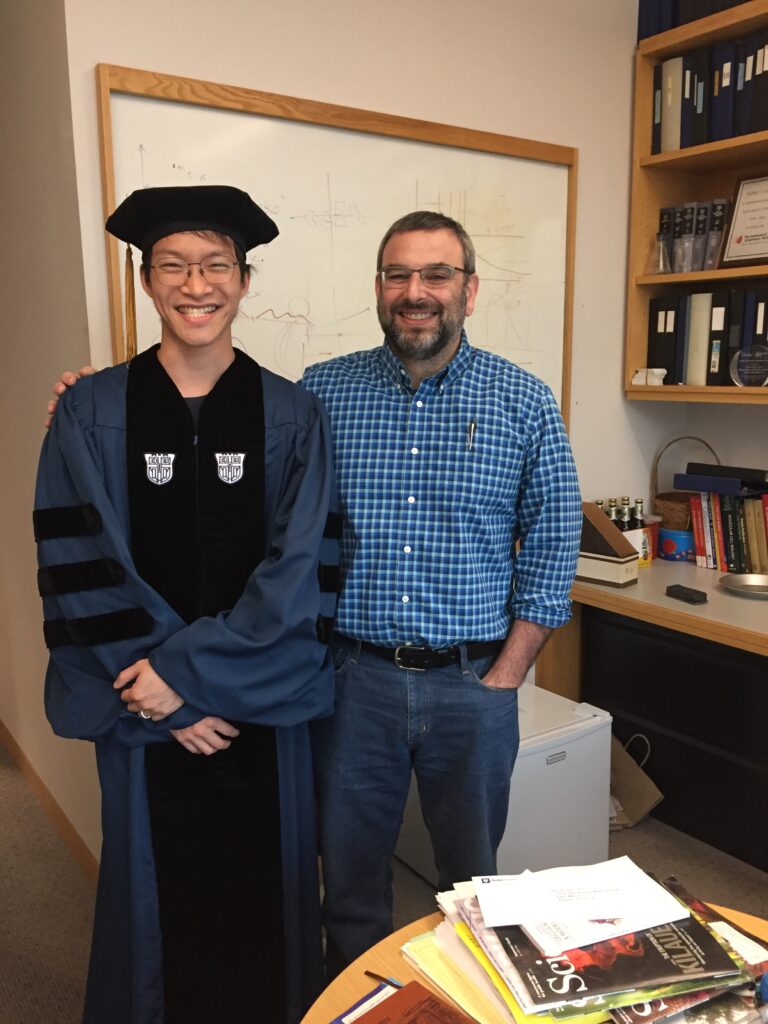
when I completed my PhD
Duke University has a system of rotating internships where each doctoral student is required to rotate through three different laboratories during their first year. The advantage of this mechanism is that it allows students to gain firsthand experience in various research areas and choose the one that interests them the most. In my case, my first two rotations were in labs related to evolution. However, when it came to the third rotation, I made the decision to opt for an entirely new and challenging field. I chose to work in an interdisciplinary lab that focused on researching yeast development and integrating mathematical modeling.
This decision represented not only an expansion of knowledge but also a challenge to my academic exploration. I had to learn how to apply mathematical tools to comprehend biological phenomena, which was an entirely new learning process for me. Consequently, it led me to wholeheartedly venture into the field of mathematical biology during my Ph.D. studies.
What was your research focus during your postdoctoral studies at UCSD in the US?
During a seminar I attended in Barcelona, I came across an incredibly inspiring short film that depicted how a group of tiny bacteria would aggregate to form a fascinating “biofilm” structure. The uniqueness of this biofilm lies in the fact that the bacteria within it can communicate with each other in a manner resembling human neural signaling. This video profoundly moved me and significantly heightened my motivation to understand these bacteria. As a result, during my postdoctoral period, my laboratory used Bacillus subtilis as a model organism to study the pattern formation process in their development, which resembles that of multicellular organisms.
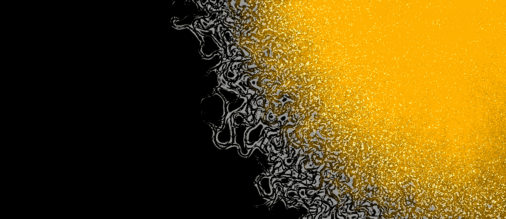
Can you explain “pattern formation” in microbial development in a more simplified way?
Pattern formation is a fundamental biological process that occurs during the development of multicellular organisms, such as plants and animals. It’s all about how cells decide where and when to do different things, like when they should specialize to become different tissues or organs. This process is crucial because it guides the overall shape and structure of living organisms.
However, pattern formation isn’t exclusive to large organisms. It can also happen at different scales, even within single cells. For example, think about a growing pollen tube in a plant. It needs to extend in a particular direction to fertilize other parts of the plant, so the proteins inside the cell need to be organized in a specific way to guide its growth. This is an example of cellular polarity, where cells point in one direction. But in some cases, like when nerve cells form dendrites (the branches that receive signals), the proteins responsible for polarity might be distributed in multiple directions. This allows the cell to grow in different directions at the same time. So, you can see that there are different types of polarity patterns depending on the situation.
To study the relationship between pattern formation and cellular polarity, we use yeast and related fungi. By doing this research, we aim to gain a deeper understanding of how microorganisms develop and uncover some universal principles related to cell development.
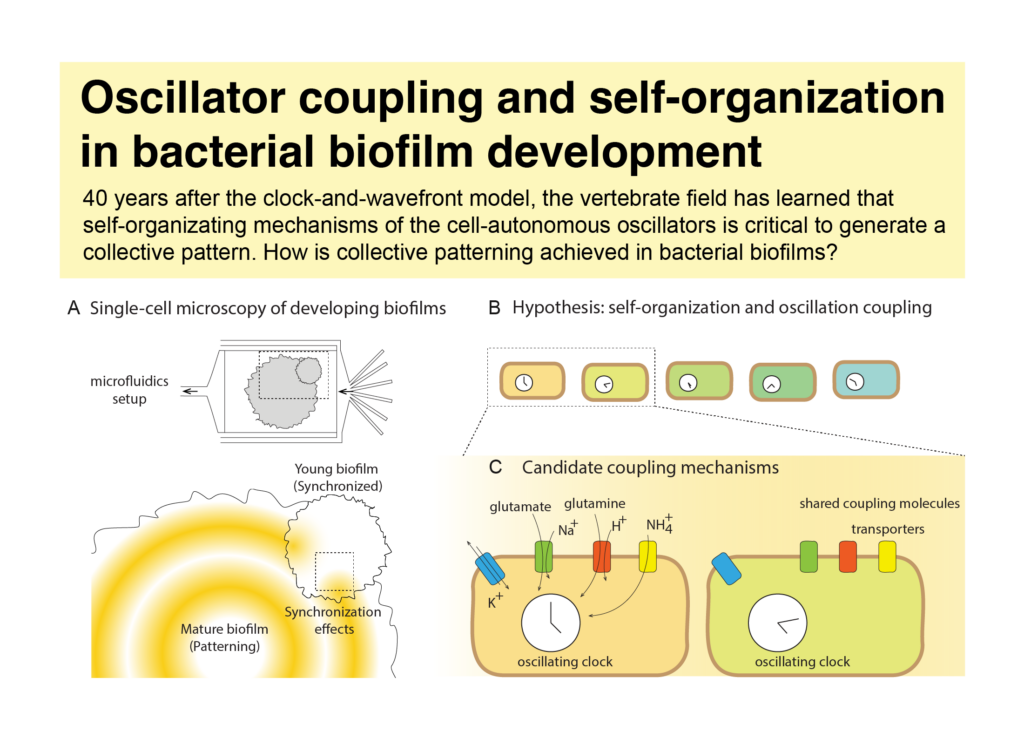
How is the study of biofilms applied in everyday life?
Traditionally, people’s understanding of bacteria was limited to single-celled organisms. However, the reality is more complex. In the right conditions, bacteria can come together and cooperate, forming what we call a “biofilm.” This biofilm exhibits developmental functions similar to multicellular organisms and can create robust defense structures that are challenging to defeat, even with antibiotics. This situation poses significant challenges in the field of medicine. When a patient’s wound becomes contaminated with a biofilm, wound healing can become exceptionally difficult. Similarly, when medical devices become coated with biofilms, it can lead to severe infection issues. Therefore, understand the developmental patterns of biofilms will allow us to better address challenges posed by microorganisms and further enhance advancements in future medical practices.
Did you encounter any interesting or challenging aspects during your research?
The most fascinating and challenging aspect was the interdisciplinary nature of the research, which incorporates multiple fields such as biology, physics, and mathematics. Different fields have their unique languages and terminologies, so I had to invest time in learning the specialized vocabulary of physics and mathematics to communicate effectively and grasp the knowledge better. While this process was not easy, it presented an interesting challenge. Furthermore, working with colleagues from diverse backgrounds injected a variety of perspectives and creativity into the research, bringing fresh insights and ways of thinking.
Fortunately, in Taiwan, students have a relative advantage in mathematics and sciences, with a deep understanding of mathematical concepts taught during high school. During my doctoral research on the stability of single-cell polarity versus multi-cell polarity in yeast cells, I was surprised to find that the mathematics I used was based on the Newtonian mechanics taught in high school physics. This experience made me realize that the mathematical knowledge I acquired in high school turned out to be quite valuable in my doctoral research, which was a really cool revelation.
During your nearly 10 years in the US, do you have any recommendations for some classic attractions?
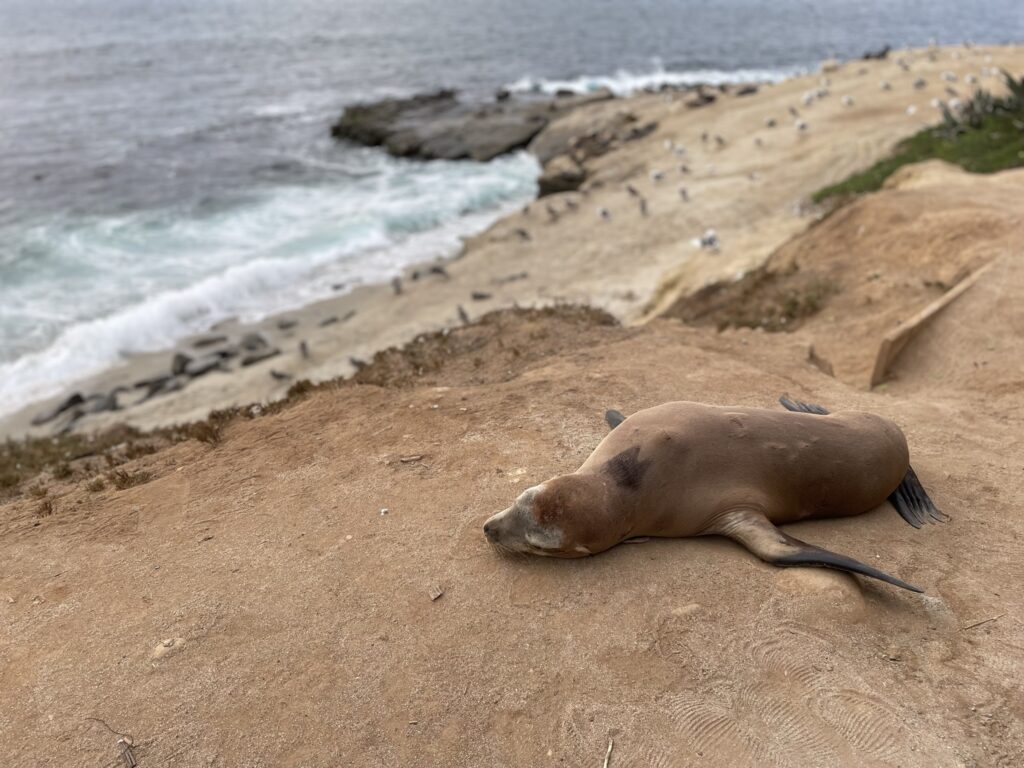
Near the University of California, San Diego (UCSD), there is a vacation beach called La Jolla Cove. This beach not only offers sweeping views of the enchanting California coastline but also stands out for its residents – groups of seals and sea lions lazing around, basking in the sun. Observing their adorable behavior can be incredibly soothing, and from time to time, you may witness these creatures making a bit of a ruckus or engaging in playful scuffles, which is quite entertaining. The area also attracts various seabirds, making it feel like a natural wildlife sanctuary – truly something special. Additionally, there are walking trails along the coastline, and you’ll often find people picnicking on the grass, making it an ideal place to unwind.
Besides, about 1.6 kilometers north of La Jolla Cove, there’s a beach called Black’s Beach, one of the largest clothing-optional beaches in the US. It provides abundant outdoor activities such as surfing and hang-gliding, offering a unique recreational destination for those who enjoy surfing and immersing themselves in nature.
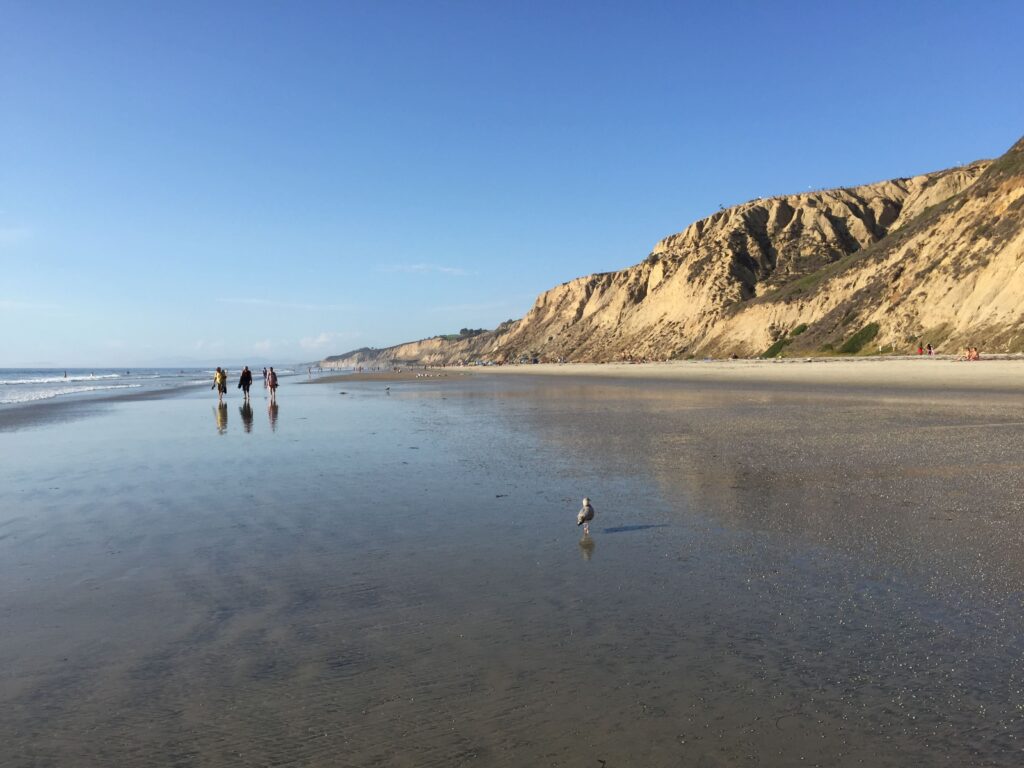
What is one unforgettable experience you had in the US?
During my time in the US, one particularly memorable experience took place on Christmas night one year. I was driving to a gas station when I happened to encounter a homeless person who approached me for assistance. We struck up a conversation, and gradually, I discovered the story behind him. It turned out that he had been kicked out of his family due to coming out as gay, and he had no choice but to live on the streets, making life exceedingly challenging.
At that moment, I extended an invitation and asked if he would be willing to stay at my home for the night. That evening, I prepared hamburgers for dinner, providing him with a place to shower and a bed to sleep in. It wasn’t until the following morning that I drove him back to his neighborhood. Later, I learned that he was actually struggling with drug addiction and needed more money than I can spare. The funds I had given him were quickly spent, and we lost contact afterward. Nevertheless, this experience left a profound impression on me.
What activities do you engage in outside of work?
During my years of living in the US, I have been actively involved in staying informed about current events and news in Taiwan. I also participate in and initiate overseas solidarity activities when necessary. When Taiwan faces significant issues or hosts important events, I see this as a way for me to contribute to societal matters. Over the past few years, I have taken part in various solidarity activities, including the Same-sex Marriage Movement, Anti-Black Box Curriculum Movement, and the 318 Sunflower Student Movement.
The purpose of these solidarity activities is to increase awareness and understanding of these issues among a broader audience and to generate greater social attention. We strive to make more people aware of the importance of these issues and to facilitate the transmission of overseas voices back to Taiwan through media and social channels, conveying our support and concern.
What encouragement do you have for students studying in the field of botany?
I believe there is an important concept to keep in mind, and that is not to limit yourself. While you may dive deep into a specific field during your studies, don’t forget that in the world of knowledge, there is an infinite expanse waiting to be explored. Don’t let your research area become a high wall that confines you within. Courageously venture beyond the boundaries of your field, understand what others are thinking, try things you’ve never attempted before, and bring your knowledge and skills into other domains to broaden your horizons.
Sometimes, when you step out of your comfort zone and try new things, you might be pleasantly surprised to find that you excel in that area as well. This not only enriches your own knowledge but also boosts your confidence. The world is diverse, and knowledge is interconnected. Continuous learning and growth are some of the true joys of conducting research.
To know more about Dr. Chiou, please
Visit IPMB at https://ipmb.sinica.edu.tw/en/people/ipmb_researchers/chiou-jian-geng
Visit the lab website at https://jchioulab.github.io/landing.html
Twitter (X): @jiangengchiou
